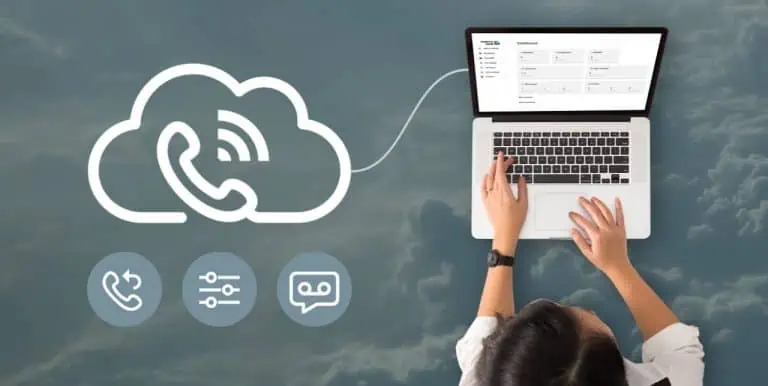Here you can find all our monthly Cloud PBX portal video updates: Cloud PBX Self-Care Portal Playlist – Dedicated Cloud PBX Portal – Seamless UX/UI Design & Function YouTube Playlist.
Thanks to plenty of customer research, the team developed a comfortable, straightforward experience where users can easily self-manage their cloud PBX environment – with far less work required from resellers. Here are all the features you’ll learn about:
- We’ve enabled cloud PBX admins to add new portal users and assign roles for them – no more need to share credentials.
- Portal users now have control over which IP addresses or networks they allow users access their cloud PBX instances from.
- Users can also manage their service activation/expiration dates without involving PortaBilling admins. This is very helpful when portal users resign or when they sign up with a later start date.
- Finally, we’ve enhanced the auto-attendant configuration. With the new visual editor for the IVR call flow, users can clearly see how incoming calls are treated at different times of day (e.g., during or after working hours), along with what announcements are played to the caller. They can also fine-tune the IVR menu right from the visual editor. We expect this feature to save lots of time on IVR menu configuration and troubleshooting.

Video transcript
Oleg: Hi, this is Oleg Shevtsov, and today with me is Dmytro Lavraniuk. We are working with Dmytro on our cloud PBX admin portal. So, Dmytro, what’s new with the cloud PBX admin portal since our last meeting a month ago?
Dmytro: It’s been a while, and we’re happy to introduce a couple of improvements that we were able to deliver to the new cloud PBX portal. So let’s dive deeper.
Adding a new cloud PBX portal user
In the newest release, customers are able to manage their portal users. This improvement is meant to simplify the life of a telco, and the life of their customers as well. From now on, a cloud PBX administrator will be able to add new portal users to manage this cloud PBX environment.
For instance, I’m adding a new team member with their own set of web credentials, and when I’m choosing a role, I’m able to pick one from the list allowed for my company. This is how I define what sort of permissions will be assigned to this new team member.
Now we see this new guy in the list, and if we go and refresh the page in the PortaBilling administrative UI, we will see this new team member on the list there as well. That means from now on, this “Kenny Smith” is able to log in and manage the cloud PBX instance.
Oleg: It looks perfect! We actually see two panes. One pane gives access to the personal information, so that people don’t have to share these credentials, and with the second one, they no longer need to call their PortaBilling administrators to set up permissions or create new users. Like, if the role allows, they are able to create account records for their colleagues. And then that colleague can also manage this portal themselves. This looks very interesting.
Allowing control over IP address access and setting expiration dates
Dmytro: Apart from that, the portal users will also be able to control from where access is allowed. This again solves security concerns – the clients know best from which IP addresses or networks access should be provided to their cloud PBX instance.
Oleg: It looks very nice. Also, I can also see some activation dates and expiration dates, so they’re also managing those settings as well. This solves the situation, for instance, when someone resigns or when new people are going to be added on some specific date in the future. It also allows the user to configure this stuff without calling their PortaBilling administrators or without calling the provider.
Dmytro: Since the customers know themselves who is being added to the team and when, or who is leaving the company and when, it’s better offload this task to the cloud PBX administrator themselves.
Enhancements to the auto-attendant and a visual IVR tree editor
Oleg: Perfect! Do you have anything more to show us – like, what else has been added since our last meeting?
Dmytro: We’ve also delivered a bit of enhancement to the auto attendant configuration. Users have been able to see the list of menus, but they cannot get any idea of how they are connected and when a particular menu gets kicked in during the day. So we introduced a visual editor for the IVR call flows. This tool gives a better understanding of how calls to, for instance, the main company number get treated at particular times of day: be it active office hours or after hours. This visual editor also now shows what nested menus the IVR has, and what’s available within those menus.
If you look closer to the tree, it actually explains how the incoming call will be treated during the day, or after hours when the office is closed. You can choose whether some announcement is played or whether a caller is offered a set of options from an enumerated list, for example.
Apart from that, the visual editor also allows you to fine-tune your IVR – you can do it straight from here for instance. For example, say I notice a mistake, like this menu shouldn’t be calling this action. Now I am removing that, and it takes effect immediately. Save the changes and voilà.
Oleg: It looks very promising. I recall that when I was talking to PortaSwitch administrators, a lot of them said that it’s very difficult to find out what’s going on with some specific customer with their IVR menus: how the calls are treated, whether some menus are active or not active, and so on and so forth. These IVR configurations can be very complex, and this tool looks like it will provide a way to look from the helicopter view and then go and configure the specific things you don’t like or the specific things you need to configure as a part of your day-to-day routine.
To me, it looks more convenient than the previous way to configure it. It looks very nice and most likely will save a lot of time for those configuring IVR menus, or who are maybe troubleshooting them or finding out how to adjust them to meet some new requirements or new ways of handling calls.
Dmytro: Exactly. And thanks to the feedback we got from our customers, we have been able to improve that user experience end to end. So thanks to all who did provide us with that feedback.
Portal road map, availability timeline, and a call for friendly users
Oleg: Are we done with the demo?
Dmytro: Actually, the next thing is to give a timeline on when this will become available to our customers. Our plan is to finish the ongoing development sprint, to add some “makeup” to the portal, and in a month, to finish the development and make the portal available for first sign-ups.
Before then, we would like to encourage any of our customers to become our friendly users.
Oleg: If you like the portal and want to be a part of its success, if you see a great value in having this modern portal, if you understand that it will create some value for your end users to administrate their cloud PBX environment – then contact us!
We’ll arrange next steps: maybe a demo or maybe a test account, or maybe you will be invited to become a part of our friendly user testing once the portal is out.
Thank you very much, and have a good time.
Check out Part I here!







